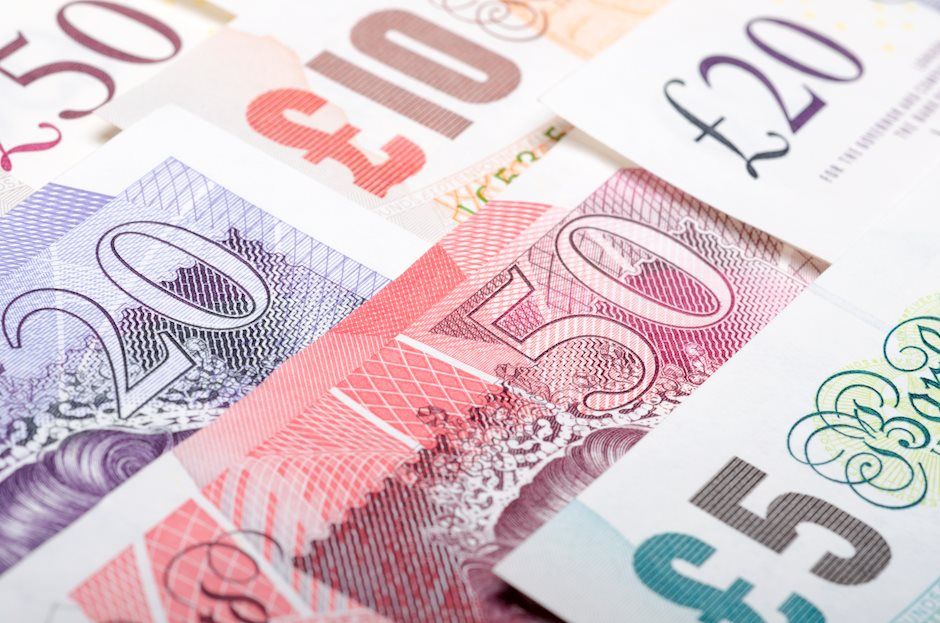Pound Sterling plunges as hot US Inflation dampens market sentiment
- The Pound Sterling dips below 1.2600 on surprisingly sticky US inflation data for March.
- The UK monthly GDP data for February will provide fresh cues about the economy’s performance.
- The UK’s rising cost-of-living crisis supports BoE rate cut prospects.

The Pound Sterling (GBP) weakens against the US Dollar in Wednesday’s early American session as the United States Consumer Price Index (CPI) data for March remains stubbornly higher. Economists anticipated the US inflation to remain relatively high in March due to increasing Oil prices, insurance costs and rentals. Hot price pressures would shift market expectations of Federal Reserve (Fed) rate cuts to the third quarter of this year.
On the domestic front, the Pound Sterling will be guided by the United Kingdom's monthly Gross Domestic Product (GDP) and the factory data for February, which will be published on Friday.
The GDP data will give a snapshot of the economy's state. The factory data represents the country’s manufacturing sector, a leading indicator of overall demand. Weak numbers would boost expectations for Bank of England (BoE) early rate cuts, while better-than-expected data will indicate that the economy is returning to recovery.
Daily digest market movers: Pound Sterling weakens while US Dollar rallies
- The Pound Sterling delivers a vertical downside move after facing selling pressure near the round-level resistance of 1.2700. Surprisingly hot United States consumer price inflation data for March has dented appeal for risk-sensitive assets. The S&P 500 is down by almost 1%.
- The annual headline inflation grew strongly by 3.5% from the consensus of 3.4% and the prior reading of 3.2%. Core inflation, which strips off volatile food and energy prices, rose steadily by 3.8% in the same period. On a monthly basis, both headline and core CPI increased steadily by 0.4%. Investors anticipated them to have grown at a slower pace of 0.3%.
- This would allow Federal Reserve (Fed) policymakers to delay rate cuts. The March CPI data suggest that a victory over inflation is not in sight. For inflation to return to the desired target of 2%, the monthly CPI needs to increase at a steady pace of 0.17% for the entire year.
- The US Dollar Index (DXY), which tracks the US Dollar’s value against six major currencies, soars to 105.00.
- On the United Kingdom front, the rising burden of the higher cost of living on households has prompted demand for rate cuts by the Bank of England. The latest survey by the Financial Conduct Authority (FCA) showed that individuals struggled to pay bills, and credit repayments fell in January annually. The agency estimated that 7.4 million individuals faced problems in addressing their monthly expenses, lower than the 10.9 million recorded in January 2023 but still significantly higher than the 5.8 million recorded in February 2020.
- Investors expect the BoE to pivot to rate cuts after the June meeting. The speculation was propelled after Governor Andrew Bailey said market expectations for two or three rate cuts this year are “reasonable.”
Technical Analysis: Pound Sterling drops vertically below 1.2600
The Pound Sterling weakens as the US CPI data surprisingly turns out hot. The GBP/USD pair falls sharply after facing stiff barricades near the round-level resistance of 1.2700. The Cable delivers a strong breakdown of Tuesday’s trading range, suggesting a downside trend. The 200-day Exponential Moving Average (EMA) near 1.2570 has been tested by the Cable.
On the downside, the psychological level of 1.2500 plotted from December 8 low will be a major support for the Cable.
The 14-period Relative Strength Index (RSI) oscillates inside the 40.00-60.00 range, suggesting indecisiveness among market participants.
Risk sentiment FAQs
In the world of financial jargon the two widely used terms “risk-on” and “risk off'' refer to the level of risk that investors are willing to stomach during the period referenced. In a “risk-on” market, investors are optimistic about the future and more willing to buy risky assets. In a “risk-off” market investors start to ‘play it safe’ because they are worried about the future, and therefore buy less risky assets that are more certain of bringing a return, even if it is relatively modest.
Typically, during periods of “risk-on”, stock markets will rise, most commodities – except Gold – will also gain in value, since they benefit from a positive growth outlook. The currencies of nations that are heavy commodity exporters strengthen because of increased demand, and Cryptocurrencies rise. In a “risk-off” market, Bonds go up – especially major government Bonds – Gold shines, and safe-haven currencies such as the Japanese Yen, Swiss Franc and US Dollar all benefit.
The Australian Dollar (AUD), the Canadian Dollar (CAD), the New Zealand Dollar (NZD) and minor FX like the Ruble (RUB) and the South African Rand (ZAR), all tend to rise in markets that are “risk-on”. This is because the economies of these currencies are heavily reliant on commodity exports for growth, and commodities tend to rise in price during risk-on periods. This is because investors foresee greater demand for raw materials in the future due to heightened economic activity.
The major currencies that tend to rise during periods of “risk-off” are the US Dollar (USD), the Japanese Yen (JPY) and the Swiss Franc (CHF). The US Dollar, because it is the world’s reserve currency, and because in times of crisis investors buy US government debt, which is seen as safe because the largest economy in the world is unlikely to default. The Yen, from increased demand for Japanese government bonds, because a high proportion are held by domestic investors who are unlikely to dump them – even in a crisis. The Swiss Franc, because strict Swiss banking laws offer investors enhanced capital protection.
Author

Sagar Dua
FXStreet
Sagar Dua is associated with the financial markets from his college days. Along with pursuing post-graduation in Commerce in 2014, he started his markets training with chart analysis.


















